This article was co-authored by Lisa Bryant, ND and by wikiHow staff writer, Danielle Blinka, MA, MPA. Dr. Lisa Bryant is Licensed Naturopathic Physician and natural medicine expert based in Portland, Oregon. She earned a Doctorate of Naturopathic Medicine from the National College of Natural Medicine in Portland, Oregon and completed her residency in Naturopathic Family Medicine there in 2014.
There are 24 references cited in this article, which can be found at the bottom of the page.
wikiHow marks an article as reader-approved once it receives enough positive feedback. In this case, 95% of readers who voted found the article helpful, earning it our reader-approved status.
This article has been viewed 44,263 times.
Psoriasis is a common skin condition where your skin cells grow too quickly, causing thick white, silvery, or red patches.[1] There's no cure for psoriasis, but you may be able to manage your symptoms naturally. For instance, using alternative medicine may help relieve your plaques, though the treatments don't work the same way for everyone. Additionally, you can try altering your diet by choosing foods that reduce inflammation while cutting out potential triggers. Finally, there are lifestyle changes you can try that might help reduce your flare-ups and relieve your symptoms. However, see your doctor if your symptoms don't improve, your psoriasis is very painful or interferes with your life, or you develop joint pain and swelling.
Steps
Using Alternative Medicine
-
1Get up to 20 minutes of sunlight every day to help produce Vitamin D. Light therapy can help improve your psoriasis symptoms, and sunlight is an easy way to do light therapy at home. However, overexposing your skin can worsen your psoriasis, so it's important to stay out for no longer than 20 minutes.[2]
- Ask your doctor before trying sunlight therapy.
- Some medications and topical creams you may be using to treat your psoriasis can increase your risk of sunburn. These include coal tar, tazarotene, pimecrolimus (Elidel), and tacrolimus (Protopic). If you're using one of these medications, ask your doctor if light therapy is right for you and use caution when going outdoors.[3]
- Start your sunlight therapy by going out for 5-10 minutes at a time, then slowly increase to 15 minutes. Only stay out for 20 minutes if you notice more benefits from staying out longer.
- If you're not sure whether you're getting enough vitamin D, ask your doctor to test your levels. If you have a vitamin D deficiency, you may benefit from taking a supplement.
-
2Use aloe vera to reduce redness, itching, scaling, and inflammation. Aloe vera gel occurs naturally in the leaves of the aloe vera plant. You can use the gel from an actual aloe vera plant or purchase an over-the-counter aloe vera cream. Apply the cream over your rash twice a day for at least a month.[4]
- Ask your doctor before using aloe vera cream. Follow all of the instructions on the packaging.
- When purchasing an aloe vera cream, choose the one with the highest concentration of aloe vera. It's not as effective in a blend.
- If you have an aloe vera plant, break open a leaf and pour the gel inside of it over your rash. Then, rub it in. However, using a plant may not be practical if you use aloe vera often.[5]
Advertisement -
3Apply capsaicin cream for symptom relief. Capsaicin, which is found in cayenne peppers, can relieve itching, scaling, irritation, and redness. You can apply an over-the-counter capsaicin cream directly onto skin affected by psoriasis. Use the cream once or twice a day.[6]
- Capsaicin cream can cause burning, stinging, itching, and redness right after application. However, these side effects usually subside soon after application. Stop using the cream if the side effects bother you.
- Do a patch test by putting a little capsaicin cream on a small area of your skin before using it to treat a large plaque. You may need to wait up to 24 hours before you see any negative reactions.
-
4Apply a 10% Oregon grape topical cream to reduce symptoms. Oregon grape, also called barberry, can help with inflammation and other psoriasis symptoms. It can reduce how fast your skin cells grow, which reduces the growth of your rash. Dab a small amount of the cream directly onto your rash up to twice a day.
- Talk to your doctor before using a cream with Oregon grape.
- Although Oregon grape is considered safe, it can cause side effects. If you experience itching, burning, irritation, or an allergic reaction, stop using the cream and call your doctor.[7]
- You can find a topical cream with Oregon grape at a drugstore or online.
-
5Treat your flare-ups with apple cider vinegar 2-4 times a week. Apple cider vinegar acts as a natural antiseptic. It can reduce itching and scaling, and it may help your flare-ups heal faster. It's especially helpful for psoriasis on your scalp. However, don't apply it to broken skin because it may cause pain and irritation to wounds.[8]
- Choose raw, organic apple cider vinegar.
- If the apple cider vinegar irritates your skin, don't use it. As an alternative, you can dilute it by mixing equal parts apple cider vinegar and water.
-
6Use coal tar to relieve scaling, itching, and inflammation. You can find over-the-counter creams, shampoos, and bath products that contain coal tar as an ingredient. Choose a product that will treat the area where you're experiencing a flare-up.[9]
- Read the product label and use it as directed.
- Keep in mind that coal tar products can be messy and may have a strong, unpleasant smell. It may irritate your skin if you're sensitive to coal tar.
- Don't use a coal tar preparation with a concentration higher than 5%. You can safely use preparations with a concentration between 0.5% and 5%.[10]
-
7Apply oils to your rashes to reduce dryness, scaling, and itching. Natural oils can help improve your symptoms. Coconut oil is useful for treating your rashes, plus you can add an essential oil, if you like. Slather the coconut oil directly onto your rash 2-3 times per day.
- Essential oils that can help relieve your psoriasis symptoms include tea tree oil, evening primrose oil, chamomile, and bergamot oil. Only use one at a time. Mix a few drops of the essential oil into a carrier oil, such as your coconut oil.[11] Essentials oil can irritate your skin and make psoriasis worse if you don't dilute them.
Eating a Healthy Diet
-
1Choose anti-inflammatory foods. Some foods reduce inflammation in your body, which is helpful for reducing your psoriasis flare-ups and relieving existing symptoms. Base your meals around fresh produce, fatty fish, beans, nuts, and legumes. Cook your foods using healthy oils, and season your dishes with fresh herbs and spices. Choose fruit for your snacks or desserts.[12]
- The best vegetable options include leafy greens, broccoli, beets, celery, cabbage, carrots, peas, Brussels sprouts, tomatoes, and bok choy.
- Healthy oils include olive oil, borage oil, sunflower oil, safflower oil, grapeseed oil, and avocado oil.
- Anti-inflammatory herbs include cayenne pepper, ginger, cloves, and turmeric.
-
2Increase your intake of foods high in omega-3 fatty acids. Omega-3 fatty acids help reduce inflammation in your body, so they can help reduce your risk of flare-ups. They also support your immune system! Choose foods high in omega-3s at least 3-4 times per week.[13]
- Good sources of omega-3s include fatty fish (such as salmon, cod, or halibut), nuts, vegetable oils, flaxseeds, flaxseed oil, and leafy vegetables.[14]
- You can also take an omega-3 fish oil supplement. However, talk to your doctor before taking any supplements.
-
3Eliminate red meat from your diet. Red meat can trigger flare-ups because it causes inflammation in your body, so it's best to avoid it. Instead, choose leaner proteins like chicken, fish, tofu, and beans.[15]
- If you enjoy eating red meat, choose lean cuts of meat like sirloin, round, or loin. Before you cook the meat, make sure you cut off as much fat as possible.
-
4Cut out processed foods. Processed foods that are high in sodium, sugar, and trans fats trigger inflammation in your body. This can cause flare-ups. Stay away from baked goods, packaged snacks, frozen dinners, canned soups, and deli meats. Instead, choose fresh, whole foods.[16]
- Although they are lightly processed, frozen meats, frozen vegetables, and whole grains can be a healthy addition to your diet.
-
5Avoid eating refined sugar. Sugar can also cause inflammation, so it's important to keep it to a minimum. Cut out baked goods, candy, ice cream, and other treats. Additionally, read food labels to look out for added sugars.[17]
- When you want a yummy treat, opt for a piece of fruit instead of a sugary snack.
-
6Stay away from dairy products if they trigger your symptoms. If you're sensitive to dairy, switch to non-dairy products, like soy milk or almond milk. In addition to milk replacements, you can find non-dairy yogurt and ice cream.[18]
- Not everyone is triggered by dairy. If it doesn't seem to affect you, dairy can be a healthy part of your diet.
-
7Consume probiotics to improve your immune health. Psoriasis is an autoimmune disease, so a healthy immune system can help reduce flare-ups. Probiotics help balance the healthy bacteria in your body. You can find them in yogurt and fermented foods. As another option, you can take a probiotics supplement.[19]
- If you can eat yogurt without triggering your psoriasis, it can be a convenient, easy way to get more probiotics in your diet.
- Fermented foods you can try include sauerkraut, kimchi, kombucha, miso, tempeh, and kefir.[20]
-
8Incorporate turmeric into your diet. Turmeric, which is packed with antioxidants, relieves inflammation in your body. It can help reduce your psoriasis flare-ups, as well as relieve your symptoms if you're already experiencing a flare-up. You can add turmeric to your dishes as a spice to increase your consumption.[21]
- If you don't like the taste of turmeric, you can take it as a supplement. Talk to your doctor before you take any supplements.
-
9Stay hydrated by drinking at least 11.5 cups (2.7 L) daily. Water helps flush out your system and is part of your body's natural detox process. How much water you need daily will depend on your age, gender, and activity levels. If you feel thirsty or have dark urine, increase your fluid intake.[22]
- In general, women need about 11.5 cups (2.7 L) of water each day, while men need 15.5 cups (3.7 L) of water daily.
- You don't have to just drink water! Fluids like tea, juice, soup broth, smoothies, etc. all contribute to your water intake.
Making Lifestyle Changes
-
1Avoid your psoriasis triggers to prevent it. Stay away from activities, foods, and substances that aggravate your psoriasis. When you have a flare-up, write down what you ate and what you were doing before it occurred. This will help you find your triggers. While some of your triggers will be unique to you, there are common triggers to avoid:[23]
- Injuring your skin, e.g., by scraping yourself or scrubbing your skin too aggressively
- Over-exposure to the sun
- Stress
- Smoking
- Certain infections, such as strep throat, bronchitis, or tonsillitis.[24] Protect yourself by washing your hands regularly and avoiding contact with sick people as much as possible.
-
2Protect your skin from the sun while you're outdoors. Although sunlight can help your psoriasis in small doses, it's very harmful if you spend a lot of time in the sun. Sunburn can trigger your flare-ups, so protect your skin! Take the following precautions when going outdoors:[25]
- Wear a large hat to protect your scalp and face.
- Apply a fragrance-free broad-spectrum sunscreen, especially to skin not affected by psoriasis.
- Wear sunglasses to protect your eyes.
-
3Moisturize your skin daily to prevent dry skin. Use a heavy, oil-based moisturizer that is fragrance free. Apply the cream to your whole body right after your bath or shower to lock in moisture.[26]
- During winter, apply your moisturizer twice a day if your skin feels dry.
- If you're having trouble finding a moisturizer, talk to your doctor or dermatologist.
-
4Take daily baths instead of showers. Soaking in a warm bath can help relieve the scaling of your rash and calm your skin. Wash your skin with a soap that contains fats or oils. Then, run a warm bath and add .5 cups (120 mL) of bath oil, .5 cups (85 g) of colloidal oatmeal, or .5 cups (110 g) of Epsom or Dead Sea salts. Soak in the tub for 10 minutes, then rinse off. Pat yourself dry with a clean towel.[27]
- Make sure any salts or oils you use are fragrance free.
- You can buy colloidal oatmeal for baths at your local drugstore, or you can prepare the oatmeal yourself by grinding up rolled oats.
-
5Do yoga daily to reduce inflammation and stress. Inflammation and stress can both worsen your psoriasis or trigger flare-ups. Yoga can help calm your body's inflammatory response, plus it helps relieve stress![28]
- Learn a few yoga poses and do them every evening to help yourself relax.
- Try following along to a yoga video workout to expand your practice.
- Take a yoga class for expert advice and to deepen your practice.
-
6Learn to manage your stress levels. Stress can aggravate your psoriasis and trigger flare-ups. Fortunately, you can learn to cope with stress! Here are some great ways to relieve your stress:[29]
- Do a light exercise for 30 minutes a day, such as walking, swimming, or doing yoga.
- Meditate for at least 10 minutes a day.
- Do something creative, like coloring, painting, or knitting.
- Put together a puzzle.
- Engage in a hobby.
- Talk to a friend.
- Journal to work through your feelings.
-
7Avoid drinking alcohol. While alcohol may not trigger your psoriasis, it can make it difficult for you to find relief. Alcohol can interfere with your psoriasis treatments, making them ineffective.[30]
- If you enjoy social drinking, try mocktails! You can learn to make your own non-alcoholic blends or talk to your bartender about the options available to you. For example, you might try a virgin pina colada!
-
8Quit Smoking, if you do. Smoking can trigger your psoriasis and worsen your symptoms, but quitting can help! However, quitting smoking can be extremely difficult. Talk to your doctor about quitting aids that can make the process easier for you, such as the following:[31]
- Nicotine gum
- Nicotine patches
- Prescription medication
- Counseling
When to Seek Medical Care
-
1Get a diagnosis before you treat yourself for psoriasis. Since psoriasis can share symptoms with other conditions, it's important to get your skin checked out by a doctor. They can examine your skin and possibly do a biopsy to make a proper diagnosis. Then, they'll help you pick the right treatment for you.[32]
- It's possible to misdiagnose yourself, which can lead to the wrong treatment.
-
2See your doctor if your psoriasis doesn't improve or is very painful. Natural treatments may help you relieve your psoriasis, but they don't work for everyone. You may need additional treatment, especially if your condition becomes very painful. Visit your doctor to learn about your treatment options if your psoriasis isn't improving or seems to worsen.[33]
- You have a wide variety of treatment options for psoriasis. Your doctor may recommend you try different topical creams, or they could offer you light therapy. Additionally, you may have options for oral or injected medications. If one treatment doesn't work for you, keep working with your doctor until you find what works.
-
3Talk to your doctor if your psoriasis interferes with your daily life. Dealing with psoriasis can be frustrating, but it shouldn't prevent you from living your life. It it does, see your doctor to discuss other treatment options. You can get relief, so don't give up.[34]
- Tell your doctor about the treatments you've already tried so they can help you decide what to try next.
-
4Visit your doctor immediately if you notice joint pain and swelling. While you don't need to worry, sometimes psoriasis can lead to joint issues. If this happens, you'll need additional medical treatment. Call your doctor if you notice joint symptoms, especially joint pain and swelling.[35]
- With treatment, you may be able to reverse these symptoms and feel better.
Expert Q&A
-
QuestionWhat are some things I can do at home to treat my psoriasis?
 Mohiba Tareen, MDMohiba Tareen is a board certified Dermatologist and the founder of Tareen Dermatology located in Roseville, Maplewood and Faribault, Minnesota. Dr. Tareen completed medical school at the University of Michigan in Ann Arbor, where she was inducted into the prestigious Alpha Omega Alpha honor society. While a dermatology resident at Columbia University in New York City, she won the Conrad Stritzler award of the New York Dermatologic Society and was published in The New England Journal of Medicine. Dr. Tareen then completed a procedural fellowship which focused on dermatologic surgery, laser, and cosmetic dermatology.
Mohiba Tareen, MDMohiba Tareen is a board certified Dermatologist and the founder of Tareen Dermatology located in Roseville, Maplewood and Faribault, Minnesota. Dr. Tareen completed medical school at the University of Michigan in Ann Arbor, where she was inducted into the prestigious Alpha Omega Alpha honor society. While a dermatology resident at Columbia University in New York City, she won the Conrad Stritzler award of the New York Dermatologic Society and was published in The New England Journal of Medicine. Dr. Tareen then completed a procedural fellowship which focused on dermatologic surgery, laser, and cosmetic dermatology.
FAAD Board Certified Dermatologist As dermatologists, we recommend 20 minutes of sun exposure, three times a week on psoriasis patches without sunscreen. You want to put sunscreen on all your other normal skin, but on the psoriasis patches, you want to leave off sunscreen. UV light therapy reduces cell proliferation, and psoriasis is a disease where the skin is growing too fast. By getting that UV light, the skin will stop growing as quickly. If your psoriasis is detrimental to your quality of life, you should definitely see a dermatologist. These days, there are super effective treatment options for psoriasis.
As dermatologists, we recommend 20 minutes of sun exposure, three times a week on psoriasis patches without sunscreen. You want to put sunscreen on all your other normal skin, but on the psoriasis patches, you want to leave off sunscreen. UV light therapy reduces cell proliferation, and psoriasis is a disease where the skin is growing too fast. By getting that UV light, the skin will stop growing as quickly. If your psoriasis is detrimental to your quality of life, you should definitely see a dermatologist. These days, there are super effective treatment options for psoriasis. -
QuestionWhat is the best vitamin to take for psoriasis?
 Mohiba Tareen, MDMohiba Tareen is a board certified Dermatologist and the founder of Tareen Dermatology located in Roseville, Maplewood and Faribault, Minnesota. Dr. Tareen completed medical school at the University of Michigan in Ann Arbor, where she was inducted into the prestigious Alpha Omega Alpha honor society. While a dermatology resident at Columbia University in New York City, she won the Conrad Stritzler award of the New York Dermatologic Society and was published in The New England Journal of Medicine. Dr. Tareen then completed a procedural fellowship which focused on dermatologic surgery, laser, and cosmetic dermatology.
Mohiba Tareen, MDMohiba Tareen is a board certified Dermatologist and the founder of Tareen Dermatology located in Roseville, Maplewood and Faribault, Minnesota. Dr. Tareen completed medical school at the University of Michigan in Ann Arbor, where she was inducted into the prestigious Alpha Omega Alpha honor society. While a dermatology resident at Columbia University in New York City, she won the Conrad Stritzler award of the New York Dermatologic Society and was published in The New England Journal of Medicine. Dr. Tareen then completed a procedural fellowship which focused on dermatologic surgery, laser, and cosmetic dermatology.
FAAD Board Certified Dermatologist Incorporating oral vitamin D has been shown to be beneficial if you are psoriatic. We recommend anywhere between 600 international units to 1,000 to 2,000 international units depending on the climate that you live in, how much sun you're getting, and your skin tone. See a dermatologist to discuss effective treatment options for psoriasis.
Incorporating oral vitamin D has been shown to be beneficial if you are psoriatic. We recommend anywhere between 600 international units to 1,000 to 2,000 international units depending on the climate that you live in, how much sun you're getting, and your skin tone. See a dermatologist to discuss effective treatment options for psoriasis. -
QuestionDo I need to see a dermatologist to treat my psoriasis?
 Mohiba Tareen, MDMohiba Tareen is a board certified Dermatologist and the founder of Tareen Dermatology located in Roseville, Maplewood and Faribault, Minnesota. Dr. Tareen completed medical school at the University of Michigan in Ann Arbor, where she was inducted into the prestigious Alpha Omega Alpha honor society. While a dermatology resident at Columbia University in New York City, she won the Conrad Stritzler award of the New York Dermatologic Society and was published in The New England Journal of Medicine. Dr. Tareen then completed a procedural fellowship which focused on dermatologic surgery, laser, and cosmetic dermatology.
Mohiba Tareen, MDMohiba Tareen is a board certified Dermatologist and the founder of Tareen Dermatology located in Roseville, Maplewood and Faribault, Minnesota. Dr. Tareen completed medical school at the University of Michigan in Ann Arbor, where she was inducted into the prestigious Alpha Omega Alpha honor society. While a dermatology resident at Columbia University in New York City, she won the Conrad Stritzler award of the New York Dermatologic Society and was published in The New England Journal of Medicine. Dr. Tareen then completed a procedural fellowship which focused on dermatologic surgery, laser, and cosmetic dermatology.
FAAD Board Certified Dermatologist There are many forms of psoriasis. Some people will just have one or two little patches in their scalp or on their hands. For limited psoriasis, sometimes just keeping your skin really moisturized and hydrated and getting a little bit of sun can be enough. If your psoriasis is detrimental to your quality of life, you should definitely see a dermatologist. These days, there are super effective treatment options for psoriasis.
There are many forms of psoriasis. Some people will just have one or two little patches in their scalp or on their hands. For limited psoriasis, sometimes just keeping your skin really moisturized and hydrated and getting a little bit of sun can be enough. If your psoriasis is detrimental to your quality of life, you should definitely see a dermatologist. These days, there are super effective treatment options for psoriasis.
References
- ↑ https://www.uofmhealth.org/health-library/hw58469
- ↑ https://www.sciencedaily.com/releases/2013/08/130806165930.htm
- ↑ https://www.psoriasis.org/about-psoriasis/treatments/phototherapy
- ↑ https://www.psoriasis.org/integrative-approaches-to-care/
- ↑ https://www.ncbi.nlm.nih.gov/pmc/articles/PMC3931201/
- ↑ https://www.ncbi.nlm.nih.gov/pubmed/3760276
- ↑ https://www.emedicinehealth.com/oregon_grape/vitamins-supplements.htm
- ↑ https://www.medicalnewstoday.com/articles/314285.php
- ↑ https://www.mayoclinic.org/diseases-conditions/psoriasis/diagnosis-treatment/drc-20355845
- ↑ https://www.psoriasis.org/about-psoriasis/treatments/topicals/over-the-counter
- ↑ https://www.medicalnewstoday.com/articles/313501.php
- ↑ https://www.psoriasis.org/treating-psoriasis/complementary-and-alternative/diet-and-nutrition/anti-inflammatory-diet
- ↑ https://www.ncbi.nlm.nih.gov/pmc/articles/PMC3257651/
- ↑ https://www.hsph.harvard.edu/nutritionsource/what-should-you-eat/fats-and-cholesterol/types-of-fat/omega-3-fats/
- ↑ https://www.psoriasis.org/treating-psoriasis/complementary-and-alternative/diet-and-nutrition/anti-inflammatory-diet
- ↑ https://www.psoriasis.org/treating-psoriasis/complementary-and-alternative/diet-and-nutrition/anti-inflammatory-diet
- ↑ https://www.psoriasis.org/treating-psoriasis/complementary-and-alternative/diet-and-nutrition/anti-inflammatory-diet
- ↑ https://www.psoriasis.org/treating-psoriasis/complementary-and-alternative/diet-and-nutrition/anti-inflammatory-diet
- ↑ https://www.medicalnewstoday.com/articles/314525.php
- ↑ http://www.gutmicrobiotaforhealth.com/en/guide-difference-fermented-foods-probiotics/
- ↑ https://www.psoriasis.org/treating-psoriasis/complementary-and-alternative/herbal-remedies
- ↑ https://shorthillsderm.com/does-drinking-water-help-psoriasis/
- ↑ https://www.mayoclinic.org/diseases-conditions/psoriasis/diagnosis-treatment/drc-20355845
- ↑ https://www.psoriasis.org/about-psoriasis/causes
- ↑ https://www.pennmedicine.org/updates/blogs/health-and-wellness/2019/august/psoriasis
- ↑ https://www.mayoclinic.org/diseases-conditions/psoriasis/diagnosis-treatment/drc-20355845
- ↑ https://www.mayoclinic.org/diseases-conditions/psoriasis/diagnosis-treatment/drc-20355845
- ↑ https://www.webmd.com/skin-problems-and-treatments/psoriasis/psoriasis-21/manage/video-psoriasis-yoga-meditation
- ↑ https://www.mayoclinic.org/diseases-conditions/psoriasis/diagnosis-treatment/drc-20355845
- ↑ https://www.ncbi.nlm.nih.gov/pmc/articles/PMC6709030/
- ↑ https://www.mayoclinic.org/diseases-conditions/psoriasis/diagnosis-treatment/drc-20355845
- ↑ https://www.mayoclinic.org/diseases-conditions/psoriasis/symptoms-causes/syc-20355840
- ↑ https://www.mayoclinic.org/diseases-conditions/psoriasis/symptoms-causes/syc-20355840
- ↑ https://www.mayoclinic.org/diseases-conditions/psoriasis/symptoms-causes/syc-20355840
- ↑ https://my.clevelandclinic.org/health/diseases/6866-psoriasis
About This Article
If you have psoriasis and you want to manage your symptoms naturally, try spending about 15 minutes outside in the sun every day. This will boost your body’s production of vitamin D, which helps stimulate healthy skin regeneration and normal cell growth. You can also obtain vitamin D by eating foods like salmon, egg yolks, Swiss cheese, fortified milk, and juice. In addition to boosting your body’s vitamin D, try rubbing aloe vera gel over any plaques up to 3 times a day to reduce redness, itching, and burning. Keep reading to learn how smoking can increase your plaques!

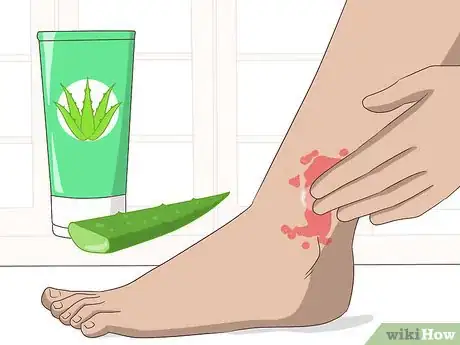
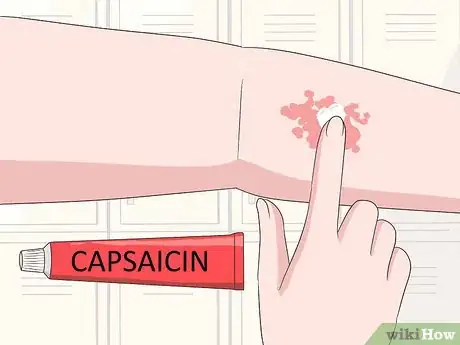
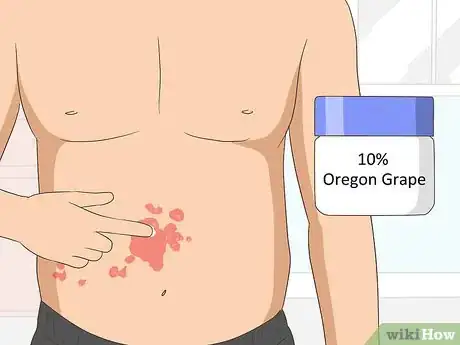



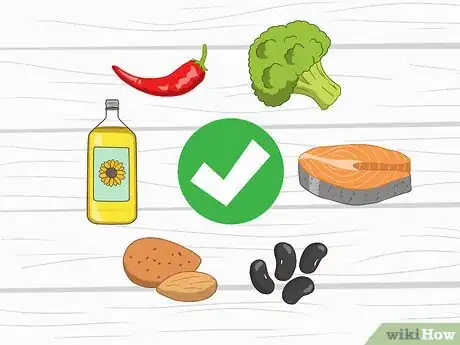

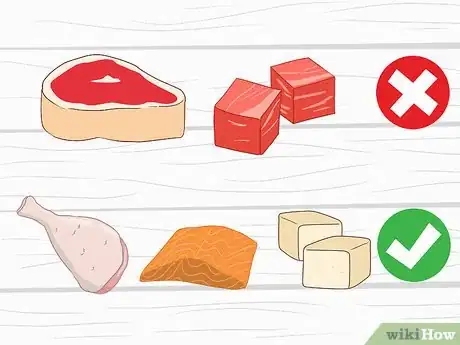

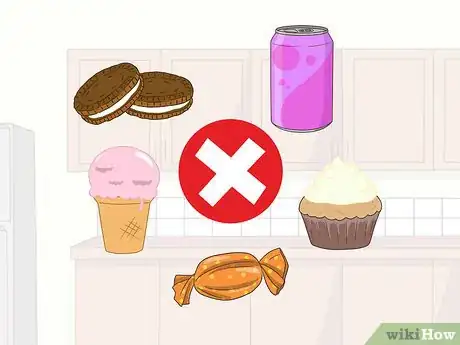



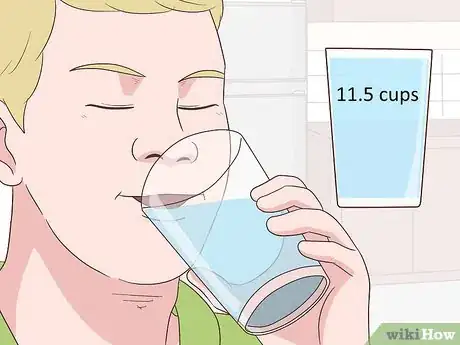
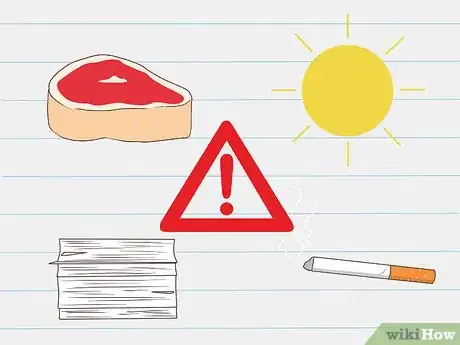

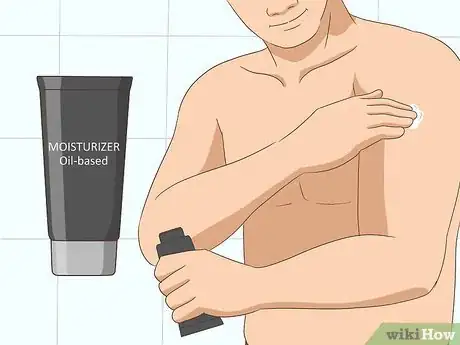
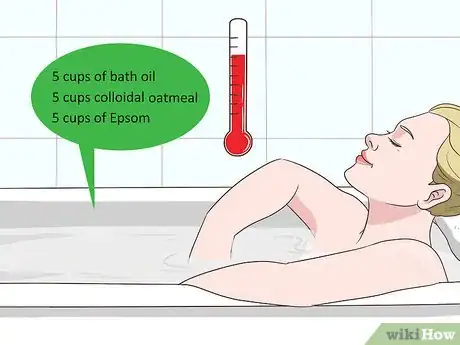
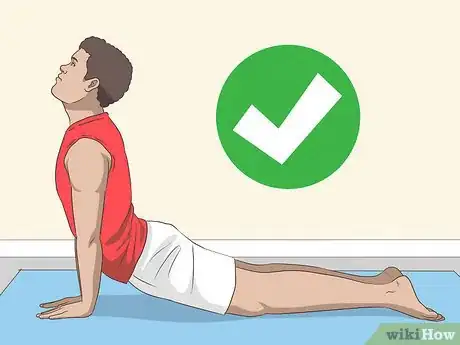
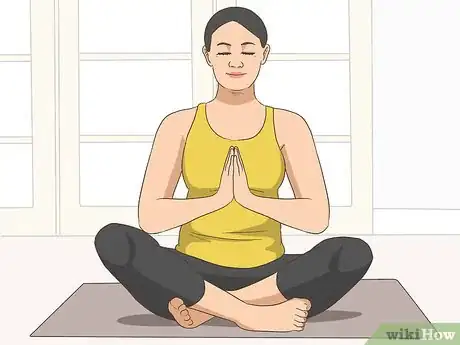

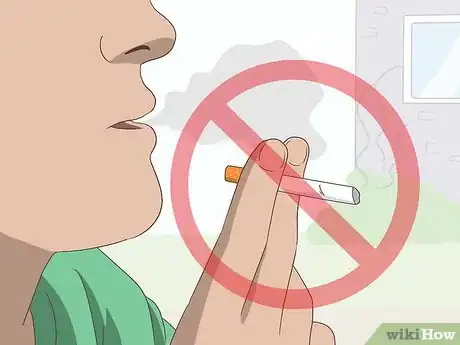
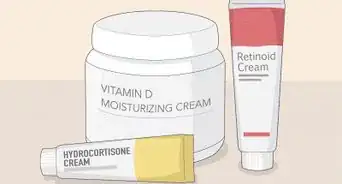

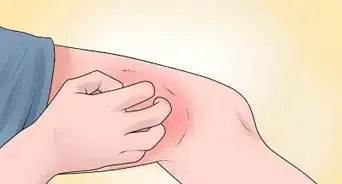
















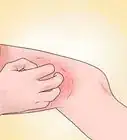




































Medical Disclaimer
The content of this article is not intended to be a substitute for professional medical advice, examination, diagnosis, or treatment. You should always contact your doctor or other qualified healthcare professional before starting, changing, or stopping any kind of health treatment.
Read More...